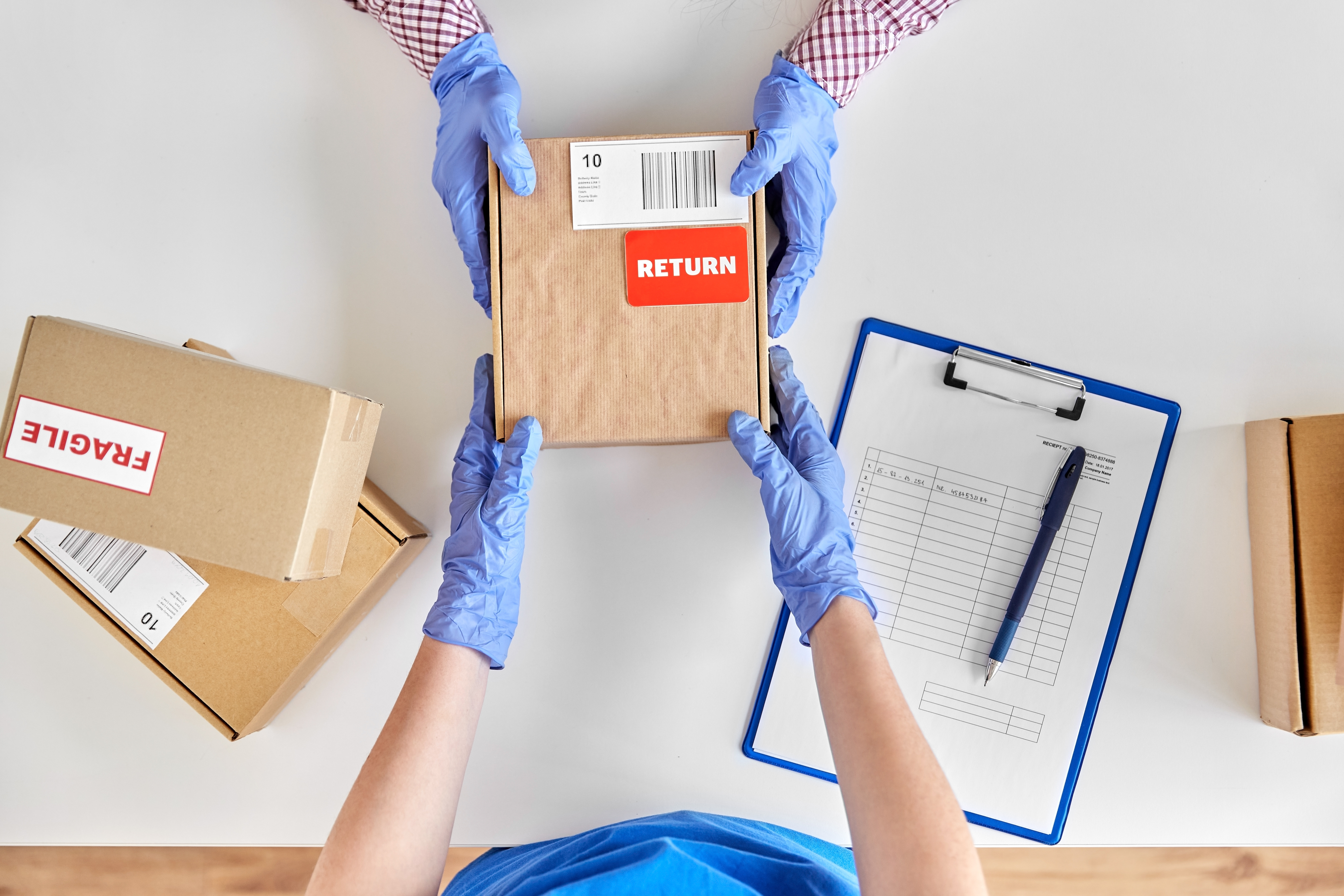Navigating the Rise in Reverse Logistics
By Brian Beetz, Labelmaster Services
Ecommerce is booming. Through the first three quarters of 2021, U.S. eCommerce sales reached $612.86 billion – up 16.4% from $526.72 billion in the first three quarters of 2020. Online sales accounted for 18.7% of total U.S. retail sales.1 This continued growth is impressive, considering that, in 2020, eCommerce accounted for $565 billion, or 14%, of total U.S. retail sales.2
However, this eCommerce acceleration brings with it a significant issue—an increase in reverse logistics activity on both the consumer/store side and the store/manufacturer side. These days, consumers expect to be able to get what they want on demand, and to return it just as easily. So, it’s no surprise that approximately $102B of merchandise purchased online in 2020 was returned,2 or that eCommerce returns average 15% to 30% of online purchases.3
While this uptick in return activity itself is challenging for technology manufacturers, it becomes even more problematic when you consider that many returns involve lithium batteries and devices that use them. This adds a new layer of complexity to the returns management process, while also shining a spotlight on the stringent regulations related to it—return shipments must comply with the same hazmat rules as items shipped to consumers in the first place. It’s the shipper’s responsibility to ensure compliance, meaning it’s also their job to ensure customers are given everything they need to adhere to these rules.

Unfortunately, many of those responsible for handling dangerous goods (DG) lack confidence in their organizations’ ability to successfully manage the reverse logistics process. Only 20% believe existing end-to-end processes and management around reverse logistics are more than adequate to ensure DG materials are returned in a safe and compliant manner. While 67% feel their reverse logistics processes are only adequate, and 13% say existing processes are not adequate to meet current needs. And, when it comes to the ability to support future reverse logistics needs, only 20% of DG pros in general believe their company can support them. In the U.S. only, that number drops to 14%.4
What can be done to get these numbers up and increase the chances of successfully complying with reverse logistics requirements? It starts with revamping the returns management process.
Improve Reverse Logistics Compliance with Overhauled Returns Management Protocols
Without a well-orchestrated and standardized returns management process, your organization risks non-compliance, operations backlogs and customer dissatisfaction. This means revamping both WHAT you use to handle DG returns, and HOW you go about executing a holistic return protocol.

Rethink the WHAT
To improve your chances of ensuring safety and compliance for yourself and your customers, consider investing in different return packaging. Today’s next-generation shipping boxes come preassembled and pre-labeled, with simple closure instructions that make it easy for anyone to keep DG returns safe, even customers who don’t realize there’s a need for it.
Many of the latest boxes are engineered with materials especially suited for providing a thermal barrier when transporting hazmat materials and lithium batteries. This can increase safety and improve the customer experience. It can also poise your organization to:
- Be ready for recalls: Safer packaging decreases the chance of a return-shipping incident for recalled items being returned to the manufacturer, especially if the recall is due to product damage or defect.
- Reduce risk: Next-gen packaging can help mitigate the risk of injuries, fines and environmental hazards that come with the return shipping of lithium batteries and other DG.
- Drive customer loyalty: Making it safer and easier for customers to self-handle returns can set your organization up for greater customer loyalty and increase the chance of repeat business.
Revamp the HOW
All the safe packaging in the world can’t help improve compliance if you don’t also create a proactive, comprehensive returns management process. You must understand the impact that this uptick in reverse logistics returns is having on your overall supply chain, and if negative repercussions are affecting your company.
Armed with this knowledge, you must carefully review your existing returns management process (if you have one) to identify where oversights, backlogs and mismanagement occurs. Once you’ve noted your existing issues, you’re ready to create a more streamlined plan for increasing both safety and efficiency within the reverse logistics stream. As part of your new plan, keep the following considerations top of mind:
- You are responsible for educating your customer: It’s on your shoulders to ensure customers are aware that rules exist. You must guide them on shipping requirements for the product being returned, given you’re essentially acting as your customers’ dangerous goods consultant.
- Do the work so customers don’t have to: Make is easy and seamless—deliver DG shipments with all the labels and markings necessary for fully compliant returns.
- Don’t overlook customer service rep training: Make sure reps are trained to correctly answer customers’ questions about return shipments of DG goods, including defective or unwanted items.
- Whenever possible, choose ground shipping: There are more allowable regulatory exceptions for this mode of transportation when compared to air travel.

Looking to the Future
The challenges associated with reverse logistics have grown along with the growth of eCommerce. These challenges were further exacerbated due to the fact that the pandemic “rapidly accelerated the growth of eCommerce three to five years ahead of schedule,” in turn increasing the number of returns.3
Given this, and that by 2028 the reverse logistics market size is expected to exceed 958 billion U.S. dollars,5 it’s more important than ever to have a plan for handling and addressing the growing volume of DG that’s entering the reverse logistics supply chain.
Put in the work now to formalize and streamline returns management operations, safety protocols and education processes to ensure you’re positioned for success during this ongoing eCommerce boon.
Sources
1 https://www.digitalcommerce360.com/article/quarterly-online-sales/
2 https://nrf.com/media-center/press-releases/428-billion-merchandise-returned-2020
3 https://www.fortna.com/insights-resources/growing-wave-of-ecommerce-returns-a-challenge-to-profitability/
4 https://www.labelmaster.com/dg-confidence-outlook/2019-results
5 https://www.labelmaster.com/dg-confidence-outlook/2019-results
 Brian Beetz
Brian BeetzBrian Beetz is Director, Regulatory Affairs and Corporate Responsibility at Labelmaster, the leading provider of products, services and technology for the safe and compliant transport of dangerous goods (DG) and hazardous materials (hazmat). He is a certified Dangerous Goods Safety Advisor (DGSA), has over 20 years of experience in the hazard communication, and environmental, health and safety sectors, and worked in the environmental consulting industry prior to joining Labelmaster.